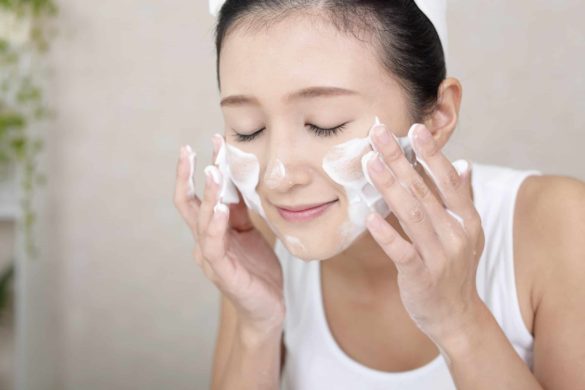After being bundled up all winter, spring can make us a little giddy. With days of sunshine ahead–from the March Equinox to the June Solstice to the September Equinox time of summer—it’s also time to don sundresses, tank tops, skimpy shorts, and bikinis.
While this prospect of donning more comfortable clothing is exciting, it’s also a little nerve wracking because our skin may not be ready for the change in season. While creating a skin care routine will help improve many skin issues, there are some common skin problems that occur after winter like stretch marks, breakouts, scaly skin, and red bumps. These problems arise in winter because of wearing so many layers of clothing.
Here’s how to fix these common skin problems:
1. Stretch Marks
Essentially, stretch marks are the result of skin pulled by rapid growth of the underlying tissue. Stretch marks can occur over almost any area of your body when you gain weight quickly, whether the weight gain is due to building muscle or gaining fat. Even if you manage to lose the weight, the fine white lines still remain. Stretch marks occur most often during puberty when the body grows at a rapid rate. The stretching tears collagen and creates inflammation, and this inflammation can show up as purple or red streaks. Over time, these marks turn white. However, since the skin is overstretched it is also thinner which makes the stretch marks even more noticeable.
The solution is to use a basic silicone fusion treatment to reduce the appearance of stretch marks. Incidentally, another benefit of this non-invasive skin treatment is that it also reduces the appearance of wrinkles.
2. Breakouts
Breakouts usually occur on chest and back areas. During winter, when you’re bundled up in layers to stay warm, your clothing traps sweat and oil from evaporating. As a result of your warm winter clothes, sweat and oil mix with bacteria and dead skin in your pores to create pimples.
The solution is to use a body wash to unclog the pores. Use one whose ingredients include benzoyl peroxide or salicylic acid. Another option is to use an alphahydroxy peel. It’s important to follow directions on the bottle because you don’t want to overdo it. Once the pimples are gone, the redness will slowly disappear, too.
3. Scaly skin.
Dry, scaly skin can occur all over your body. Your skin not only gets scaly, but it also has a dull, lackluster look. Again, this is a consequence of winter because you may have neglected regular exfoliation, as well as skipped moisturizing after a bath because you were in a hurry to slip into something warm.
The solution is to use a sugar scrub for exfoliation. After patting yourself dry, or lightly toweling, apply a moisturizing cream. It’s a mistake to skip the exfoliation and jump straight to the moisturizing part because the moisturizer will penetrate much better after you’ve stripped off the dead layers of skin.
4. Red Bumps
Red bumps occur on arms and thighs. This condition, known as keratosis pilaris or chicken skin, is a result of clogged pores around hair follicles. Essentially, what happens is that dead cells mingle with excess keratin, the protein found in hair.
The solution is to use washes with glycolic acid. Washes with lactic acids also work well. These washes help to exfoliate the dead skin cells. After exfoliation use a moisturizer.
Staying Safe in Summer
Besides these four tips on remedying common skin problems after winter, here are two more tips for avoiding skin problems in summer:
1. Use sunscreen, and use it even on cloudy days. Be sure to read the ingredients to select safe and non-toxic lotions.
2. Avoid tanning beds to get that summer beach look. According to the Centers for Disease Control and Prevention (CDC), “Using a tanning bed, booth, or sunlamp to get tan is called indoor tanning. Exposure to ultraviolet (UV) rays while indoor tanning can cause skin cancers including melanoma (the deadliest type of skin cancer), basal cell carcinoma, and squamous cell carcinoma. UV exposure also can cause cataracts and cancers of the eye (ocular melanoma). UV exposure from the sun and from indoor tanning is classified as a human carcinogen (causes cancer in humans) by the International Agency for Research on Cancer.”
Now that you’ve figured out how to get your skin ready for summer, it may be time to figure out all the great things you’re going to do this summer.
Cover Pic Source: Chispa Magazine





